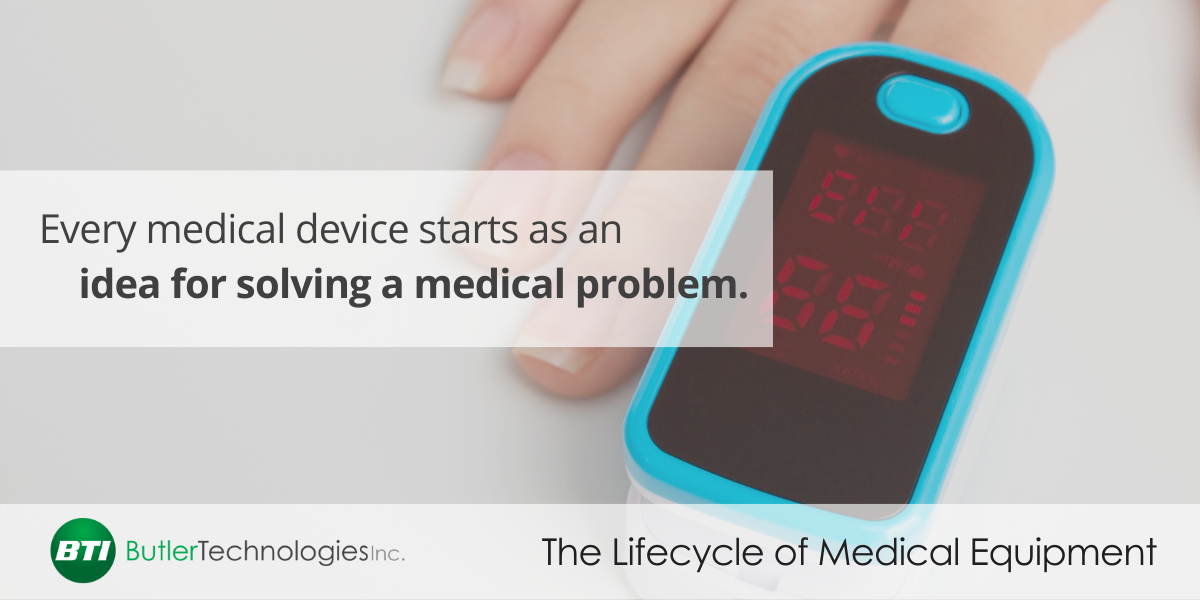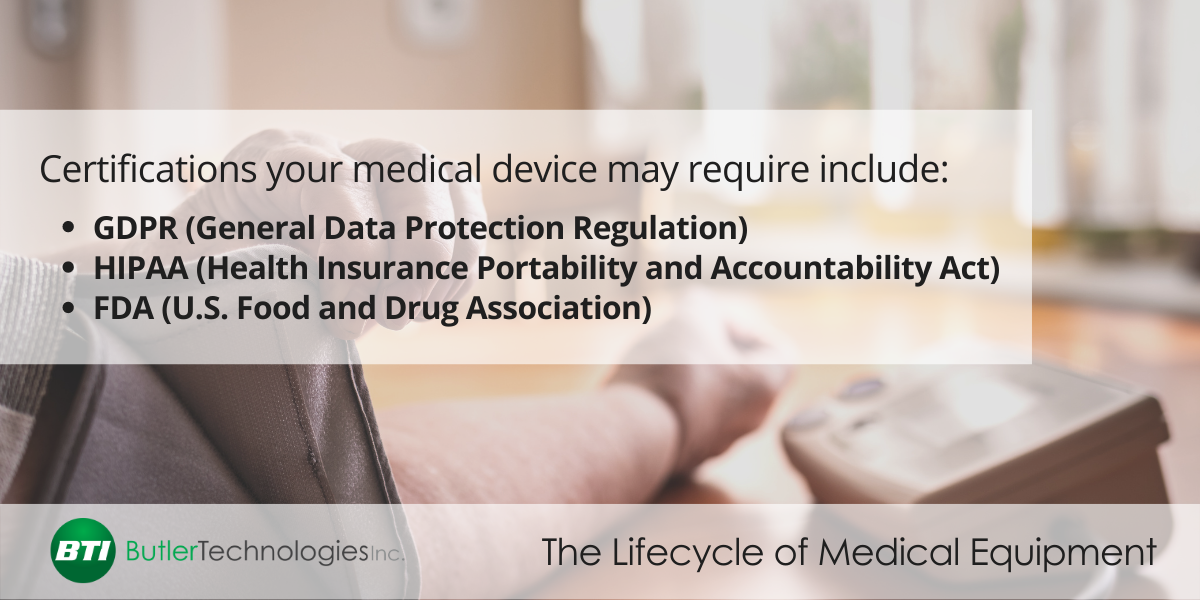From wearable electronics that provide users with real-time information to biometric sensors that track vital data points, medical devices have become a critical aspect of the healthcare value chain. They play an essential role in diagnosing and treating illnesses or injuries safely and effectively. As a result, the market is booming.
Medical devices marketed in the United States of America and other countries are often subject to regulatory control and may involve adhering to specific development and post-market requirements designed to ensure optimal performance, quality, and safety. Examples include conforming to the General Data Protection Regulation, or GDPR, in the European Union to avoid data manipulation and misuse as well as meeting Health Insurance Portability and Accountability Act of 1996, or HIPAA, compliance in the United States of America. The U.S. Food and Drug Association, or FDA, also must approve medical devices and verify that they are safe and effective to use before being marketed as a medical device.
Navigating these conditions may appear daunting, but it doesn’t have to be. Here’s a quick breakdown of the medical equipment lifecycle and how we can streamline the process with comprehensive product lifecycle management.
The Lifecycle of Medical Equipment: A Tried and Tested Process
Like most other products, medical equipment begins its life in a manufacturing plant before being sold to the end-user. The lifecycle of a medical device is divided into seven distinct stages.
Discovery
Every medical device starts as an idea for solving a medical problem. Defining the product, its user base, and potential routes to market are essential.
Common questions asked may include who does it serve, and in what scenarios will it be used? What are the different ways it will be used, and what priorities need to be taken into account? For example, will the medical device be used in a hospital setting, or in a patient’s home? Who will be operating it – a healthcare provider or the patient themselves? What training will they receive before operating it?
Often a mutual non-disclosure agreement is signed to protect intellectual property. At this stage, the manufacturer you work with evaluates whether they can help make your idea or product a reality, and makes sure they understand your vision to the best of their ability.
Connecting
During this stage, you’re introduced to the manufacturer’s team as a whole. You’ll meet the team and learn who your point contacts will be in regards to the overall project, materials sourcing, design, quality control, and more.
To foster a collaborative relationship, the manufacturer’s team learns about your company, goals, and product in-depth before coming up with a proposal. The process may involve establishing a regulatory strategy, classifying risks, building a design file, and developing a market plan.
Quite frankly, there are a lot of medical equipment manufacturers out there. It’s important to make sure that the team you work with is eager to make sure they fully understand your project. Ideally, the team will ask detailed questions in regards to your product type, production capabilities, quality accountability, workplace culture, and any other business facet you value.
You’ll likely have a project kickoff meeting where you’ll meet this team either in person or over video call, and determine how you’ll communicate going forward – in what manner and how often.
Design And Prototype
Upon receiving an accepted proposal, the design and prototype process begins. At this stage, engineers will iterate the product design and draft technical documentation. They will determine how to translate the needs of your product into material and functional requirements.
For example, does the product need to be waterproof? How rigid should the interface be? Is this a product that’s been on the market before, or is the design brand new to the market and its users? The team will work to balance best practices for user experience design with the most suitable materials and production methods.
Once approved, a prototype is produced for testing and validation.
Verification And Validation
Depending on a medical device’s intended use, it may be subject to enhanced trials and testing before release to the public is allowed. During this phase of the medical device product lifecycle, clinical validation activities to verify device safety and effectiveness are performed.
Any changes or revisions may require new designs or proposals, with which the manufacturer should be happy to assist. Once the prototype passes applicable testing and validation requirements, a final production proposal is submitted.
Manufacturing
When the final production proposal is approved, full-scale production can start. Before kicking things off, it’s important to know the company you’re partnering with can actually manufacture your medical product.
Ask a lot of questions, such as: Where do you source your raw materials? What is your production throughput? Do you have an equipment maintenance schedule? If a machine that’s critical for manufacturing my product goes offline, what’s the contingency plan?
Post-Market
In the past, regulators focused primarily on the device design and development process. Updates to standards such as ISO 13485:2016 emphasize post-market requirements, making it necessary to provide life cycle management.
In this stage, product improvement opportunities exist. It’s important to learn what controls the manufacturer has in place for post-market surveillance. Can you gather data reactively? Do you investigate issues as they are reported? Can you provide a product performance assessment after the data is collected and analyzed?
Make Your Medical Device Idea a Reality
When you’re ready to move your medical device from design to finished product, Butler Technologies, Inc. is here to help. As an ISO 13485:2016 with Design certified manufacturer of printed electronics, we have the design and manufacturing expertise needed to handle the complex challenges of production.
Our capabilities include:
- Graphic Overlays
- Membrane Switches/Keypads
- Silicone Rubber Keypad
- Printed Electronics
- Back Lighting
- Labels & Decals
- Gaskets/Insulators/Shielding
- Materials & Inks
- Instrument Dials/Gauges
- Wearables
- Printed Biometric Sensors
- Flexible Heaters
- Force-Sensing Resistors
- Capacitative Touch
- Flexible Circuits & Flexible Hybrid Electronics
- Printed Antennas
- PE Partnerships
Streamline Your Medical Device Lifecycle with Butler Technologies
Medical devices incorporating user interfaces and printed electronics will play a pivotal role in healthcare moving forward. Butler Technologies is happy to help you establish a successful product lifecycle framework.
Contact us
to learn more about our process and how to make your medical device possible. We’d love to discuss your project in greater detail.
Meet the Author
 Madelyn is an integrated marketing specialist at Butler Technologies and has a passion for problem-solving, project management, and storytelling. She loves marketing in the B2B technology space and has a degree in English specializing in editing, writing and media from Florida State University.
Madelyn is an integrated marketing specialist at Butler Technologies and has a passion for problem-solving, project management, and storytelling. She loves marketing in the B2B technology space and has a degree in English specializing in editing, writing and media from Florida State University.
